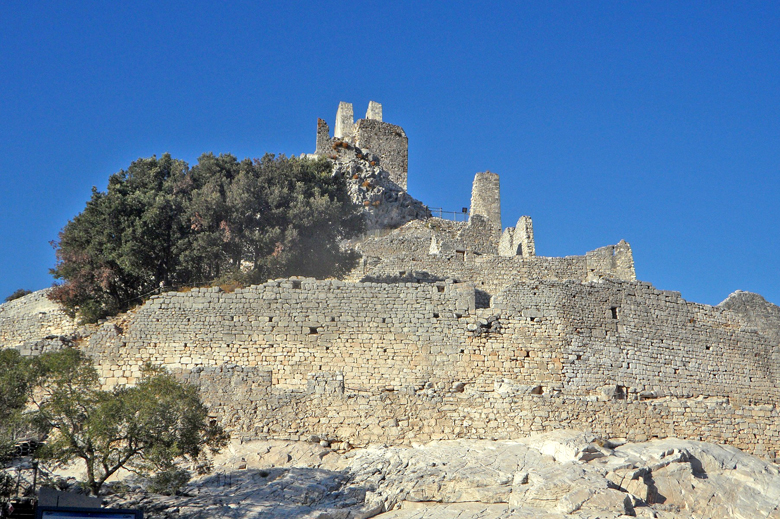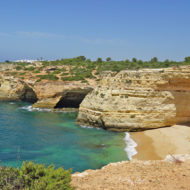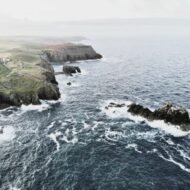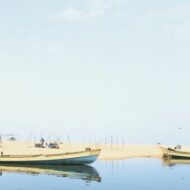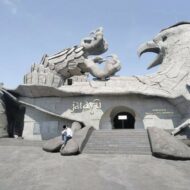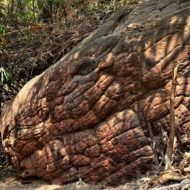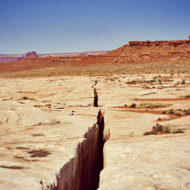Rocca San Silvestro, known in the Middle Ages as the Pitosfero, is a fortified village built around the tenth century, thanks to the noble exploitation of the rich mineral deposits.In Rocca San Silvestro, at the time of maximum expansion of the settlement (second half of the 13th century), 200/250 people lived, in about 42 homes.
The almost one-hectare village, located on the crest of a limestone cone plant in the extreme north of the central Italian community Campiglia Marittima and San Vincenzo in Val di Cornia – Tuscany on Italy’s west coast, on the Tyrrhenian sea once served miners and metal smelters as a living and working space.
It is considered one of the most significant examples of a stately settlement in connection with mining and metalworking in Europe.
The village was known in the Middle Ages as Rocca a Palmento (a millstone, palmentum, was in fact found in the mill below the church) and owes its present name to the saint to whom the church was named. The abandonment, which occurred during the fourteenth century, was the consequence of multiple factors, first of all the economic one, due to the change in the management system of mineral resources. like the rest of the settlement, and the interior was used as a storage room for work tools.
The erea is an Protected natural area of Local Interest and the travelers who pass through the park have been fascinated.The site rises to the slopes of the Mount Calvi in the heart of the archaeological park “Parco Archeominerario di San Silvestro” accessible only with guided tours.
During the guided tour of the castle, visitors can enjoy an equipped itinerary through the remains of houses, the church, the cemetery, the elegant area and the industrial area, on a journey of discovery to understand social and economic organization, the eating habits, building and metallurgical techniques of a medieval community.
Access : Coordinates: 43.086565°, 10.60355° / The entrance to the San Silvestro Park is, widely reported, on the SP20 provincial road in the section that connects San Vincenzo (Li) to the village of Campiglia Marittima (Li) / The journey time from Valle Lanzi station to Rocca San Silvestro is about 20 minutes /
Brown tourist directional signs are present at the San Vincenzo south exit of the SS1 Aurelia. From Rome : 3 h 43 min (269 km) via SS1 Via Aurelia/E80
Highlights: Site layout :
- The village consists of two concentric and fortified floors. The upper floor is the real fortified part, with the watchtower, while the lower one is the center inhabited by the miners, with the houses, the oven, the production area and the popular village.
- The Rocca is divided into several buildings and basic buildings: the walls , the door , the church , the cemetery , the miners’ houses , ,the oil mill , the oven , the noble village and the tower , the water collection tank ,
Outside the walls there are: mineral production and processing areas , the forge , the charcoal pile , the limestone quarry , The city walls ,
By far the largest part of the outer bailey formed the terraced residential district for the miners, metallurgists and craftsmen and their families. - Park of San Silvestro Rocca : Located behind Campiglia Marittima and the promontory of Piombino, the Archaeological Mines Park of San Silvestro extends over an area of about 450 hectares.
The visit routes wind through museums, mining galleries, a medieval village of miners and founders founded about a thousand years ago, and paths of historical, archaeological, geological and naturalistic interest.
The park offers an exciting visit in the midst of nature, history and archeology, suitable for couples, adults, families and children. The erea is an Protected natural area of Local Interest - The mine train : The mine train that passes through the San Silvestro mining park. One of the main attractions of the San Silvestro Archaeological Mine Park, which is covered on board the characteristic yellow train.
- Lanzi Gallery – Temperino/the Lanzi Temperino direct tunnel : the Lanzi Temperino direct tunnel (formerly Ortaccio) was started as a gallery for mining research in the second half of the 800.
It was then completed by the Italian company Mine of Campiglia Spa in the 1960s as a tunnel for the carriage, for the transport of the mineral from the extraction well to the crushing and flotation plants of Valle Lanzi.
Facilities : Entrance and Visitor Center – Ticket Office building , mining museum and the archaeological park open to visitors , Bookshop , Restaurant , Parking lots
Tip : Access to the Rocca is possible by following an equipped uphill path, to be followed preferably with sneakers or trekking shoes.
Visiting hours: The times of the guided visits can undergo variations Entrance fees: free visit except for the Mines, where a guided tour is mandatory.
Activities : sightseeing / photo opportunities / trekking / discovering the natural and historical beauties of the Archaeological Mine Park / Discover Campiglia Marittima
Go next : San Vincenzo / Palazzo Pretorio / Castle of the Gherardesca / Parish Church of San Giusto / Aldobrandesca Fortress / Cathedral of San Cerbone /Villa Lanzi, a 16th century building




